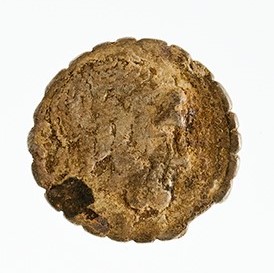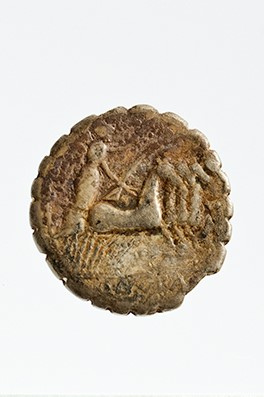Title: Denarius (serrate) of Q. Antonius Balbus - 1965.06
Acquisition number: 1965.06
Author or editor: Beryl Rawson
Culture or period: Roman Republic
Date: 83 BC
Material: Metal - Silver
Object type: Coins - Roman
Dimensions: 18mm (w)
Origin region or location: Italy
Origin city: Rome
Display case or on loan: 5
Keywords: Coin, denarius, Roman, Republic, Jupiter, Victory
Sear, D.R., Roman Coins and their Values 5 vols (London, Spink, 2000-2014) 279; Crawford, M., Roman Republican Coinage 2 vols (Cambridge, Cambridge University Press, 2011) 364/1a; Sydenham, E. A. The Coinage of the Roman Republic (London, Spink, 1952; (Sanford J. Durst repr. 1976) 742-742B; Seaby, H.A., Roman Silver Coins (London, B.A. Seaby, 1967) Antonia 1-1d; Grueber, H.A., Coins of the Roman Republic in the British Museum 3 vols (London, The Trustees of the British Museum, 1910; rev. edn London, 1970) I. 2730.
Badian, E., Studies in Greek and Roman History (Oxford, Blackwell, 1964).
1965.06
Denarius (serrate) of Q. Antonius Balbus
3.656 g. c. 83 BC
Obv.: Head of Jupiter, laureate, r. In field, [S(enatus)] C(onsulto). Border of dots.
Rev.: Victory in a quadriga (four-horse chariot)r., holding wreath and palm-branch. In exergue, Q(uintus) ΑΤΟ(nius) [BAL]B(us) PR(aetor). Border of dots.
Q. Antonius Balbus held command in Sardinia in 82 BC until he was driven out and killed by the Sullan L. Marcius Philippus. His coinage from Rome preceded this, and must have been part of special senatorial preparations to resist the return of Sulla from the East. (See Badian 100 n. 79.) It was exceptional for coinage to be issued by a praetor, whose duties were mainly legal.
Artistically, the reverse is archaic, with the four horses of the quadriga visible in a strict pattern. All sixteen legs are religiously shown.
If there was a control-mark on obverse or reverse, it is no longer visible. The serrations have also worn down. Crawford (79) describes the ‘prolific serrate denarii’ of Balbus as the ‘forerunners of the serrate denarii which are the regular products of the mint of Rome in the following period’.
Sear, D.R., Roman Coins and their Values 5 vols (London, Spink, 2000-2014) 279; Crawford, M., Roman Republican Coinage 2 vols (Cambridge, Cambridge University Press, 2011) 364/1a; Sydenham, E. A. The Coinage of the Roman Republic (London, Spink, 1952; (Sanford J. Durst repr. 1976) 742-742B; Seaby, H.A., Roman Silver Coins (London, B.A. Seaby, 1967) Antonia 1-1d; Grueber, H.A., Coins of the Roman Republic in the British Museum 3 vols (London, The Trustees of the British Museum, 1910; rev. edn London, 1970) I. 2730.
Badian, E., Studies in Greek and Roman History (Oxford, Blackwell, 1964).
ON LOAN from Dr Hugh Preston

